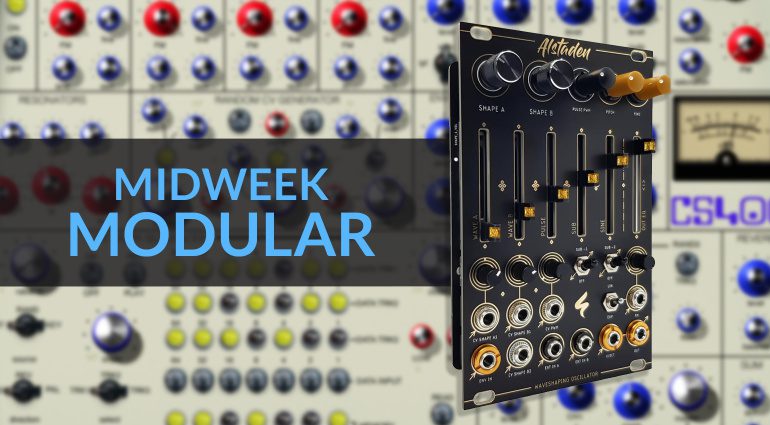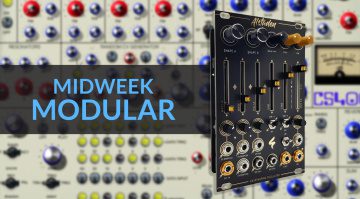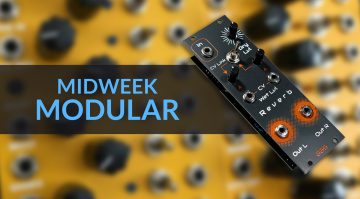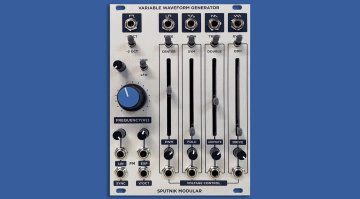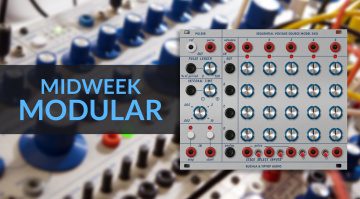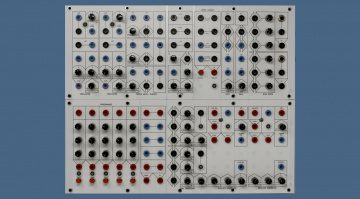Midweek Modular: Mega-Tang, 8 Step and some Buchla inspired computing
We’ve got some West Coast flavour with ALSTADEN and Computsynth400, some superpowered 8 Step and a Quad VCA with stereo mixer pretensions. Let’s get into it.
The news of the week is that there’s a new update to the Mutable Instruments Plaits that adds 8 new synthesis models. This includes a 2-voice, 6-operator FM mode that’s compatible with DX7 patches. Read more about it here.

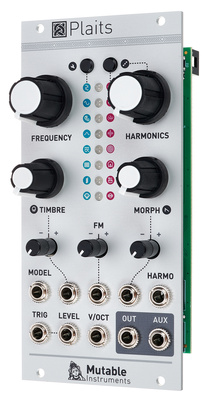
Nano modules released SERRA, an interesting ADSR envelope with lots of modulation and manipulation possibilities. Read more about it here.

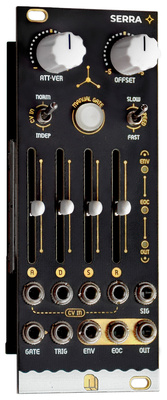
And DF Audio is releasing a new, smaller desktop patchbay called Patchworks, which could be a fabulous way of patching Eurorack to pedals. Read more about it here.
Midweek Modular
Here are the other modular bits and pieces that caught my eye this month.
Joranalogue Step 8
I think we first saw this module at Superbooth 2021, but now it’s finally here. Step 8 is a Sequential Tracking/Sampling Register which sounds like a posh way to describe an 8-step sequencer, but it’s much more than that. Each step can sample an incoming voltage in a track & hold or sample & hold kind of fashion. So you can capture a sequence and then output it, and manipulate it, or shift it by scaling the sliders. You can even shape waveforms with it.
All the steps have their own CV and Gate outputs, so you can use it as a sequential switch or for polyphonic voices. You’ve also got inputs for transport control, reverse, reset and addressing individual steps.
Step 8 is an interesting module that I’ve failed to explain properly, which is what usually happens with Joranalogue’s level of modular. It’s too clever for me and is a range of modular I aspire to grasp fully at some point.
You are currently viewing a placeholder content from YouTube. To access the actual content, click the button below. Please note that doing so will share data with third-party providers.

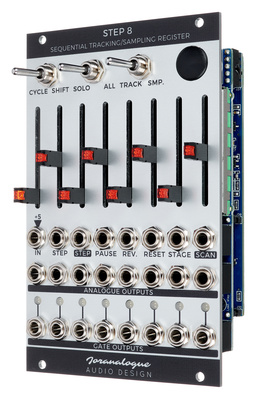
Busy Circuits MEGA-TANG
The MEGA-TANG is a 4-channel VCA and stereo mixer. It’s very neat and clearly laid out in a bit of a channel-strip style. Inputs at the top, the CV control over the level, sends, panning, level knob and mute switch. The outputs are to the side, which is the only part that doesn’t conform to the straightforward structure.
As a 4-channel stereo mixer, you have a single auxiliary send with a stereo return. Panning is right there, and I really appreciate the blue mute buttons. You’ve got a little bit of level metering at the top and a Left & Right mix output.
Good, simple, useful and easy, will mix both CV and audio and has an expansion port for future expandability.
You are currently viewing a placeholder content from YouTube. To access the actual content, click the button below. Please note that doing so will share data with third-party providers.
ST Modular ALSTADEN
Just in from ST Modular is the ALSTADEN analogue waveshaping oscillator that can also shape other things and fancies itself as a bit of a VCA. It follows the vibe of the second oscillator from ST Modular’s fabulous Euphoria synthesizer. There’s a combination of diode clipping, mirroring and folding that produces high harmonics and timbral variations. You also find a bit of EQ in there somewhere on a single slide to boost either the bass or higher frequencies.
There are five different waveforms. The first two are the folded and manipulated ones, follow but a pulse width modulated pulse, a 1 or 2 octave down sub-oscillator and a simple sine wave. There’s only a single output, the contents of which are mixed on the sliders. You’ll find plenty of modulation available over the shape, PWM and FM to give it plenty of movement.
It’s the sort of oscillator you could get lost in for days.
You are currently viewing a placeholder content from YouTube. To access the actual content, click the button below. Please note that doing so will share data with third-party providers.
Giorgio Sancristoforo COMPUSYNTH400
To finish off with a bit of software, we have the West-Coast programmable modular synthesizer from the mind of Giorgio Sancristoforo. It combines Buchla ideas with a bit of the 1974 Altair 8800 microcomputer which was the first personal computer you could build yourself. If that seems a weird choice, you’d be right.
Apparently, the CS400 has everything Giorgio loves about west coast modular rolled into one interface. It can lean on enough computing power to generate tons of different sounds in wonderful ways. The microcomputer-inspired 128-step 7-bit sequencer with data tracks, and input algorithms can make for a very interesting experience. Top it all off with a tape echo and a massive modulation matrix you’ve got a dreamy vintage synth that will keep you entertained forever.
It’s only available as a stand-alone synth for macOS at the moment, but a Windows version should be along in the New Year.
You are currently viewing a placeholder content from YouTube. To access the actual content, click the button below. Please note that doing so will share data with third-party providers.

 4,1 / 5,0 |
4,1 / 5,0 | 